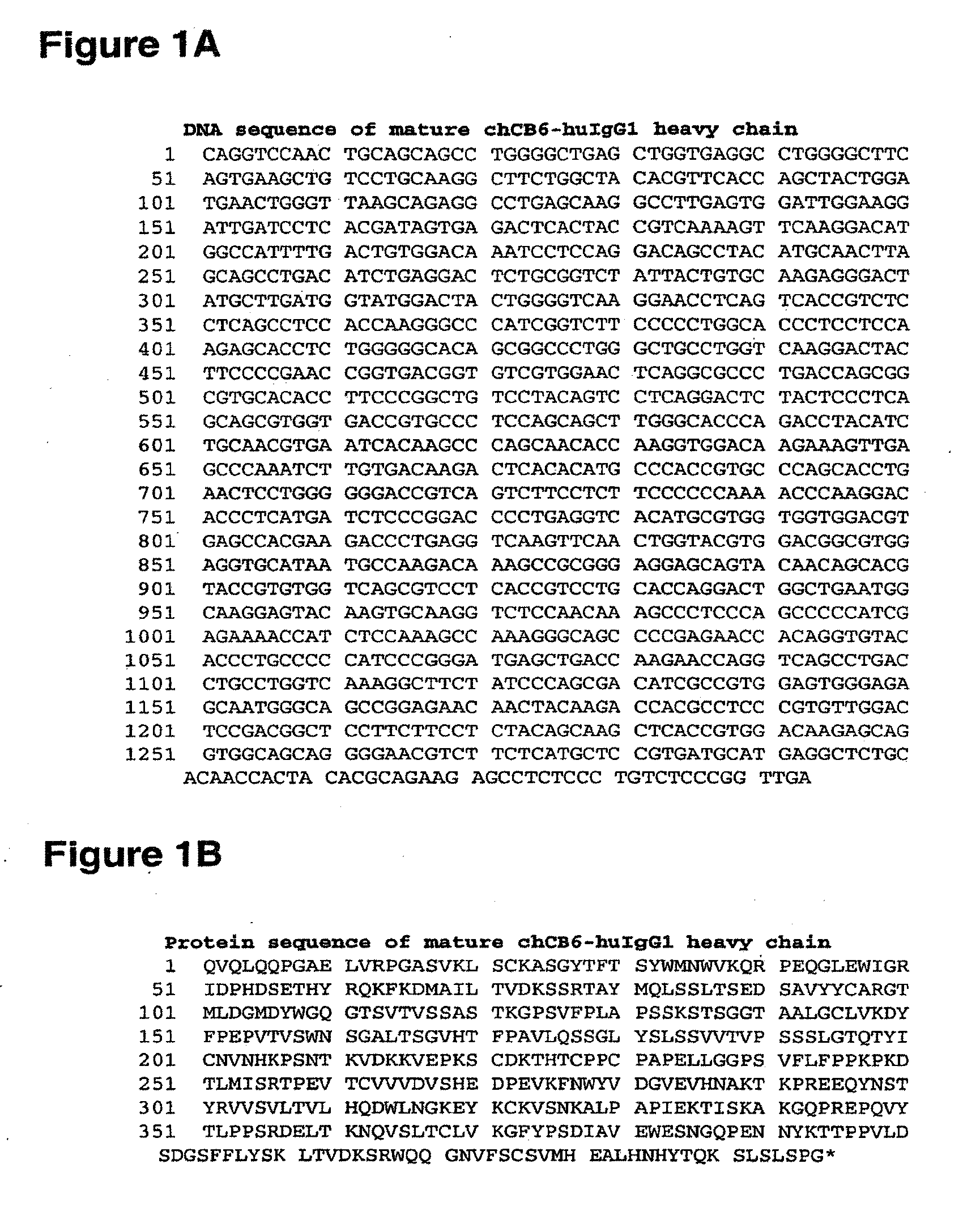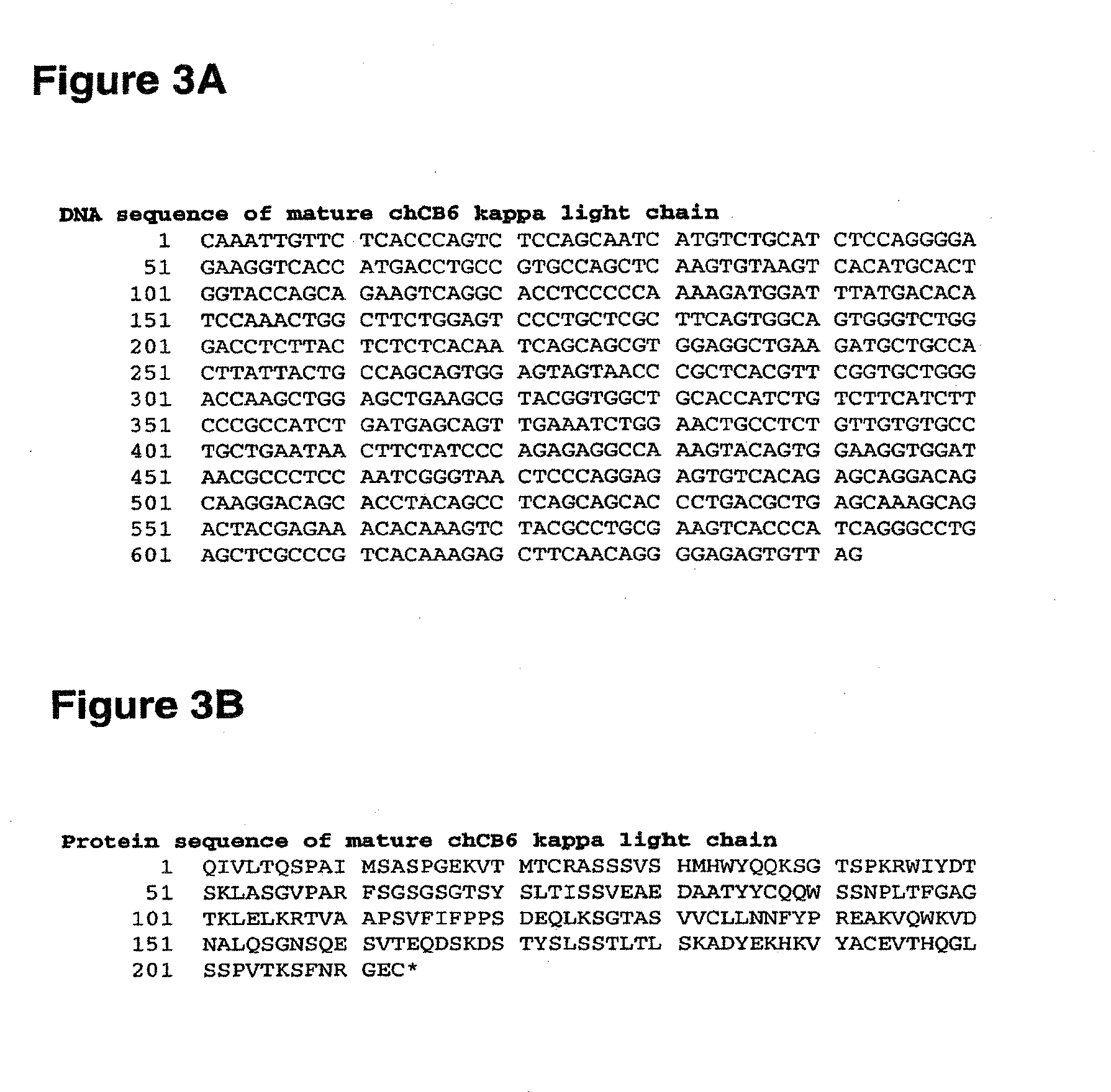Fc gamma receptor-binding polypeptide variants and methods related thereto
a polypeptide and gamma receptor technology, applied in the field of fc gamma receptor-binding polypeptide variants and methods related thereto, can solve the problems of fragments having a reduced half-life, difficult purification, undesirable cell population depletion, etc., to reduce the binding affinity of the altered fc-containing polypeptide for fcr, increase and reduce the free energy of binding
- Summary
- Abstract
- Description
- Claims
- Application Information
AI Technical Summary
Benefits of technology
Problems solved by technology
Method used
Image
Examples
example 1
Identification of Target Residues that Influence FcγR Binding and Selection of Preferred Amino Acid Substitutions using Electrostatic Optimization
[0540]In an effort to identify the identify the position of target Fc residue(s) that are sub-optimal for FcγR binding, electrostatic charge optimization techniques were applied to a crystal structure of human Fc polypeptide complexed with CD16 (also known as FcγRIII) (see Radaev et al., J. Biol. Chem. 276:16469-16477, 2001; Sondermann et al., Nature 406:267-273, 2000). A crystal structure corresponding to an Fc / CD16b complex (PDB codes 1e4k and 1iis) was prepared using standard procedures for adding hydrogens with the program CHARMM (Accelrys, Inc., San Diego, Calif.). N-acetamide and N-methylamide patches were applied to the N-termini and C-termini, respectively.
[0541]The electrostatic charge optimization procedure utilized a previously described computational analysis (see Lee and Tidor, J. Chem. Phys. 106:8681-8690, 1997; Kangas and Ti...
example 2
Identification of Target Residues that influence FcγR binding and selection of Preferred Amino Acid Substitutions using Conformation Analysis
[0547]Analysis of the conformational differences between a free Fc molecule and an Fc molecule bound to CD16b revealed several significant differences. The differences include a widening of the angle between domains CH2 and CH3 when Fc is bound to CD16b. By mutating the Fc protein to generate mutations that favor the CD16-bound conformation, the affinity of Fc for CD16 was predicted to increase. The identification of altered polypeptides that favor a “bound” conformation were identified using several methods:
[0548]a) 3-D Visualization
[0549]Since the bound form of Fc has a widened angle between the CH2 and CH3 domains, a 3-D molecular visualizer was used to identify mutations that disfavor the unbound conformation by steric crowding. Two suitable amino acid positions were identified: A378 and D376.
[0550]Mutation that substituted A378 for an amin...
example 4
Construction of Altered Fc Polypeptides
[0558]Alterations predicted by the methods of the invention were introduced into a starting polypeptide encoding the heavy chain of the murine / human chimeric IgG1 monoclonal antibody chCB6-huIgG1. FIGS. 1A and 1B display the nucleotide (SEQ ID NO. 3) and amino acid sequence (SEQ ID NO. 4) of this heavy chain respectively. The variable domain of the antibody is residues 1-120, the human IgG1 constant domain is residues 121-449. FIG. 2 displays the amino acid sequence of the Fc region of chCB6-huIgG1 in EU numbering.
[0559]CB6 is a human CD2-specific murine monoclonal antibody (IgG1, kappa) and was raised using standard techniques. Briefly, mice were immunized with CHO transfectants expressing full-length human CD2. Hybridoma supernatants were screened for binding to CD2-positive Jurkat cells. The variable domains of the CB6 heavy and light chain cDNAs were cloned by RT-PCR from total hybridoma RNA using standard molecular biological techniques. T...
PUM
 Login to View More
Login to View More Abstract
Description
Claims
Application Information
 Login to View More
Login to View More - R&D
- Intellectual Property
- Life Sciences
- Materials
- Tech Scout
- Unparalleled Data Quality
- Higher Quality Content
- 60% Fewer Hallucinations
Browse by: Latest US Patents, China's latest patents, Technical Efficacy Thesaurus, Application Domain, Technology Topic, Popular Technical Reports.
© 2025 PatSnap. All rights reserved.Legal|Privacy policy|Modern Slavery Act Transparency Statement|Sitemap|About US| Contact US: help@patsnap.com



